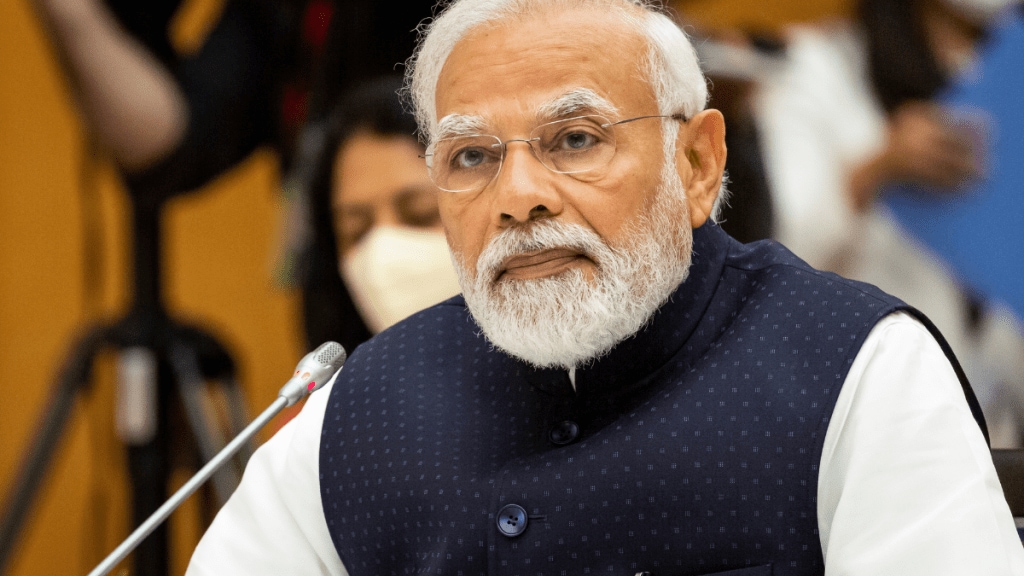The Centre and states will work together to set up an investor-friendly charter for states to attract foreign investment, abolish poverty and link rivers for shared prosperity to make India a developed nation by 2047, Prime Minister Narendra Modi said on Saturday.
Amid a boycott by some chief ministers, a walk-out by Mamata Banerjee and absence of 10 CMs in all at the ninth Governing Council meeting of Niti Aayog, Modi urged all states to increase productivity and diversification in agriculture and provide market linkages to farmers. He also emphasised skilling and training of youth to make them employment-ready.
As per the approach paper for ‘Viksit Bharat @2047’, India will have to strive to be a $30-trillion economy by 2047 with a per capita income of $18,000 per annum, from the current $3.36 trillion and $2,392 per annum, respectively.
“The three big takeaways from the Governing Council meeting in terms of conclusion was: develop an investor-friendly charter where states can be ranked on a 100-point scale on how good they are in attracting investment and FDI, zero poverty and basic river grids,” Niti Aayog CEO BVR Subrahmanyam told the press.
Net FDI declined to $10.6 billion during FY24, down 62% on year from $28 billion in FY23, mainly reflecting higher repatriation. To become a developed nation, India’s investment needs to be around 32% of GDP by 2030, before rising to 34% by 2040 and to around 35% by 2047.
As per a Niti Aayog estimate, 248.2 million people moved out of multidimensional poverty between 2013-14 and 2022-23. The Vision Document, which will be released after incorporating inputs from states soon, will likely have a timeline to bring down multidimensional poverty to less than 1% of the population.
However, many economists highlight the need for a poverty estimate based on a suitable income threshold alone. It is also being observed that reverse migration of labour to low productivity agriculture and stagnant employment growth indicate a spurt in poverty.
To become a developed nation, India will aim to become a leading global economy, a driver of global economic growth, a magnet of global talent, trade and capital, as per the paper. Its cities and markets will be among the largest and top-most business and financial centres of the world. India will aim to have Indian-origin global business champions in manufacturing, services, agriculture, R&D and innovation, with Indian firms working on the frontiers of innovation, technology and scale. It aims to have a vibrant rural economy with rural standards of living on par with urban areas and average rural incomes (both farm and non-farm) comparable with the per capita income of the country.
On the demographic front, India can aim for raising the average life expectancy to around 84 years, which is the best in the world. The total fertility rate (TFR) will be gradually declining to about 1.80 and the population stabilising at about 165 crore by 2047. Being a youthful nation, the working age population would be around 112 crore, making it the single-largest workforce of any nation in the world.
Modi emphasised on spreading the adoption of natural farming practices that can improve soil fertility, ensure better and quicker returns to farmers due to low costs, and also provide a global market for the products. The PM encouraged states to initiate demographic management plans to address the issues of population ageing in future.
Modi observed that the vision of “Viksit Bharat can be realised through Viksit States, and that the aspiration of Viksit Bharat should reach the grassroots level — to each district, block, and village. “For this, each state and district should create a vision for 2047,” he said.

